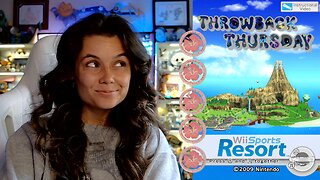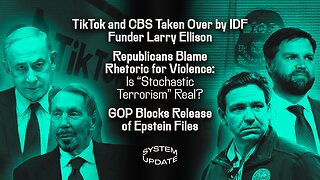Premium Only Content

NFL’s “Tush Push” Explained: The Sneak Play They Almost Banned
#TushPush #NFLAnalysis #QuarterbackSneak #ShortYardage #PhillyEagles #FootballDebate #NFLStrategy #JalenHurts #GoalLine #FootballTactics #nfl
The “Tush Push” is a specialized version of the quarterback sneak in which two or three offensive teammates line up directly behind the quarterback at the snap and shove him forward through the line of scrimmage. Rather than relying solely on the quarterback’s surge behind his blockers, this “Brotherly Shove” adds collective momentum that often makes it nearly unstoppable in third-and-short or goal-line situations. Originating with the Philadelphia Eagles, it quickly became their trademark short-yardage weapon for Jalen Hurts and has since spread to contenders across the league.
Despite its simplicity, the play’s results are staggering. Since 2022, the Eagles and Buffalo Bills have executed the Tush Push 183 times and converted 87 percent of those attempts into first downs or touchdowns, far outpacing the rest of the NFL, which converts similar quarterback sneaks at just a 71 percent clip. This efficiency has altered how teams defend the one-yard line and reshaped play-calling in critical short-yardage moments.
Critics argue the Tush Push undermines the spirit of individual skill and introduces new safety risks. Teams voting against banning it in 2025 frequently cited concerns over linemen bearing repeated high-impact shoves without clear evidence of long-term effects. Packers president Mark Murphy dubbed the tactic “bad for the game,” saying it removes the necessity for high-precision execution. Proponents counter that it remains fully compliant with current rules and still demands perfect timing, coordination, and physical strength to succeed.
In May 2025, NFL owners narrowly rejected a proposal to outlaw the play, needing 24 “yes” votes but falling two short with only 22 in favor of a ban. Instead of elimination, the league imposed a modification: any player designated as a “pusher” must now line up one yard behind the quarterback before the snap, preventing an instantaneous shove and potentially reducing its raw power. This tweak aims to balance competitive fairness with preserving a popular, rule-legal tactic.
With the play surviving another season, it’s poised to remain a focal point of short-yardage strategy. Teams will study how the one-yard-back alignment affects success rates and may innovate countermeasures or alternative formations. Given the margin by which the ban fell, expect the debate to resurface at next year’s meetings, as franchises weigh whether the Tush Push’s competitive edge outweighs calls for stricter regulation in the ever-evolving chess match of NFL strategy.
-
 1:11:31
1:11:31
Flyover Conservatives
12 hours agoThe “J Walker” Secret: One Daily Habit That Shifts an Entire City - Tammy Hotsenpiller | FOC Show
52.2K3 -
 2:12:02
2:12:02
Mally_Mouse
8 hours ago🎮Throwback Thursday! Let's Play: Wii Sports Resort!
45K2 -
 LIVE
LIVE
Akademiks
5 hours agoATLANTA IS BACK. Young Thug and YFN best buddies now. ATL backs Thug officially!
1,220 watching -
 5:40:35
5:40:35
Reolock
7 hours agoWoW Classic Hardcore | 3 LEVELS REMAIN
43.1K3 -
 3:00:23
3:00:23
Sgt Wilky Plays
6 hours agoThirst Trap Thursday | Regiment Donor Drive
35.5K -
 4:12:29
4:12:29
Fragniac
7 hours ago🔴 LIVE - FRAGNIAC - THE FINALS - IT'S ABOUT TO BE A MOVIE❗🎬📽 🎞
26.8K2 -
 1:39:44
1:39:44
Glenn Greenwald
8 hours agoJames Comey Indicted; TikTok and CBS Taken Over by IDF Funder Larry Ellison; Republicans Blame Rhetoric for Violence: Is "Stochastic Terrorism" Real? GOP Blocks Release of Epstein Files | SYSTEM UPDATE #521
146K89 -
 LIVE
LIVE
StevieTLIVE
6 hours agoThursday SOLO Warzone Domination | BDAY at Midnight
20 watching -
 10:34:47
10:34:47
FoeDubb
12 hours ago🏰KINGDOM MENU: 🎮WASTELAND SHENANIGANS ON DA 1ST BORDERLANDS DILLY DILLY!!!!
9.15K -
 15:57
15:57
Robbi On The Record
9 hours ago $0.60 earnedTranshumanism: Are Humans Becoming Obsolete? Neuralink & CRISPR explained
12.8K5